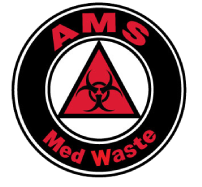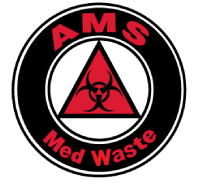What Qualifies As Medical Waste?
Any medical provider is going to be faced with the everyday challenge of disposing of medical waste properly. It’s a great responsibility one has to shoulder due to the incredible health risks that are associated with medical waste. In order to avoid the risks and ensure you are achieving the proper level of vigilance, we first must determine what exactly the different types of waste are, then we can find out what qualifies as medical waste.
Types Of Medical Waste
Let us start by laying out the eight different types of waste as defined by the World Health Organization (WHO).
Infectious waste
Pathological waste
Sharps waste
Chemical waste
Pharmaceutical waste
Cytotoxic waste
Radioactive waste
Non-hazardous or general waste
That’s a decent list. Some of them are exactly as the name implies, some of them may be less clear as to what it means. In order to pull back the fog, should any exist, lets now define each type of medical waste and provide some examples of what falls into each category. Some overlap does happen here and there.
Infectious waste: This is anything that can spread, as the name implies, any kind of infection. This can be as simple as cultures, tissues, and agents used in lab work to anything that is contaminated with blood and other bodily fluids.
Pathological waste: This one is very straightforward, it’s human tissues, organs, bodily fluids, bits and pieces of the body, and animal carcasses.
Sharps waste: The name really defines it, but you could generally say that it is anything that pierces the skin. Things like needles, scalpels, stables, sutures, etc. Some extra care should be taken when disposing of these as they can pierce their containment.
Chemical waste: Solvents, disinfectants, battery acid, heavy metals, etc. A lot of these would be found from lab work but as some of them, such as any sterilants, are far more common.
Pharmaceutical waste: This has to do with unused and expired medications, and vaccines. Additionally, any of these that become contaminated for one reason or another would qualify as well.
Cytotoxic waste: Now that’s a word not many people have seen before we’re willing to bet. Hopefully going forward you’ll be able to break this one out at trivia nights. This type of waste is anything that contains genotoxic properties. What are genotoxic properties you might say? Well they are substances of an extremely hazardous nature that are: mutagenic, teratogenic, carcinogenic, etc.
Radioactive waste: Pretty straightforward really, as the name suggests it has to do with radiation. A few common examples would be radioactive diagnostic materials, or radiotherapeutic materials.
Non-hazardous or general waste: This is simply any waste that does not pose any particular biological, chemical, radioactive, or physical threat to people and the environment.
So there we have it. A quick look at the various types of medical waste. As a fun fact take into consideration that high-income countries on average produce up to 0.5kg of medical waste per hospital bed a day, with low-income countries producing 0.2kg per bed a day. That’s just hospitals, this does not include other medical facilities like clinics, or veterinarians.
Undoubtedly you can get an idea of how much medical waste is out there, and why preventing health risks is a massive task, a task that you don’t necessarily have to tackle alone.






